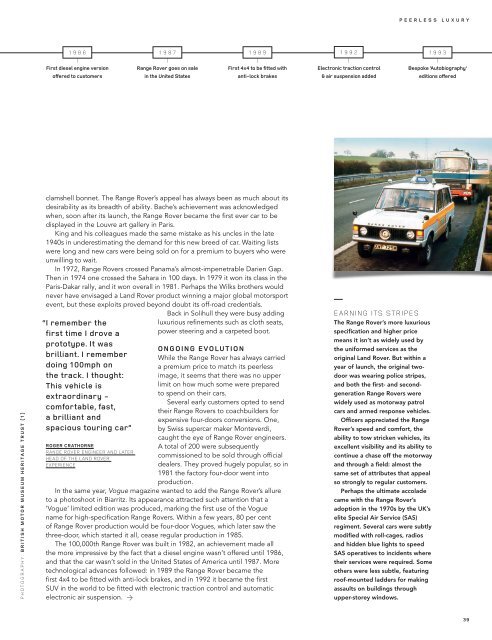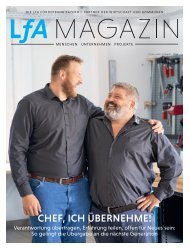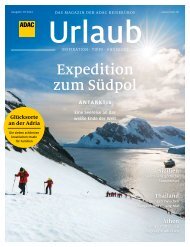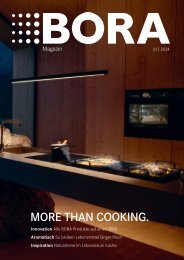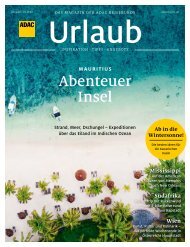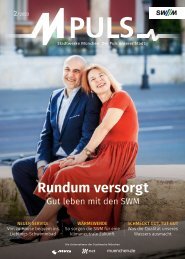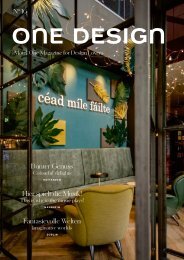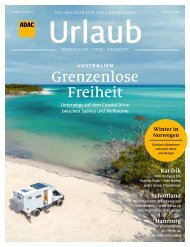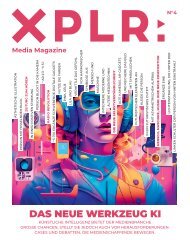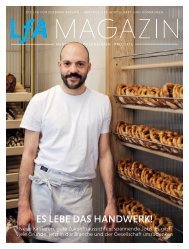ONELIFE #36 – English
Land Rover’s Onelife magazine showcases stories from around the world that celebrate inner strength and the drive to go Above and Beyond. This special issue of Onelife marks Land Rover’s 70th anniversary – a celebration of unparalleled achievement and pioneering innovation. We bring you the incredible story of how we reunited an original 1948 car with its former owners, as well as looking back at Land Rover vehicles’ most intrepid expeditions around the globe.
Land Rover’s Onelife magazine showcases stories from around the world that celebrate inner strength and the drive to go Above and Beyond.
This special issue of Onelife marks Land Rover’s 70th anniversary – a celebration of unparalleled achievement and pioneering innovation. We bring you the incredible story of how we reunited an original 1948 car with its former owners, as well as looking back at Land Rover vehicles’ most intrepid expeditions around the globe.
Create successful ePaper yourself
Turn your PDF publications into a flip-book with our unique Google optimized e-Paper software.
PEERLESS LUXURY<br />
1986<br />
|<br />
First diesel engine version<br />
oered to customers<br />
1987<br />
|<br />
Range Rover goes on sale<br />
in the United States<br />
1989<br />
|<br />
First 4x4 to be fitted with<br />
anti-lock brakes<br />
1992<br />
|<br />
Electronic traction control<br />
& air suspension added<br />
1993<br />
|<br />
Bespoke ‘Autobiography’<br />
editions oered<br />
PHOTOGRAPHY: BRITISH MOTOR MUSEUM HERITAGE TRUST (1)<br />
clamshell bonnet. The Range Rover’s appeal has always been as much about its<br />
desirability as its breadth of ability. Bache’s achievement was acknowledged<br />
when, soon after its launch, the Range Rover became the first ever car to be<br />
displayed in the Louvre art gallery in Paris.<br />
King and his colleagues made the same mistake as his uncles in the late<br />
1940s in underestimating the demand for this new breed of car. Waiting lists<br />
were long and new cars were being sold on for a premium to buyers who were<br />
unwilling to wait.<br />
In 1972, Range Rovers crossed Panama’s almost-impenetrable Darien Gap.<br />
Then in 1974 one crossed the Sahara in 100 days. In 1979 it won its class in the<br />
Paris-Dakar rally, and it won overall in 1981. Perhaps the Wilks brothers would<br />
never have envisaged a Land Rover product winning a major global motorsport<br />
event, but these exploits proved beyond doubt its off-road credentials.<br />
Back in Solihull they were busy adding<br />
“ I remember the<br />
first time I drove a<br />
prototype. It was<br />
brilliant. I remember<br />
doing 100mph on<br />
the track. I thought:<br />
This vehicle is<br />
extraordinary -<br />
comfortable, fast,<br />
a brilliant and<br />
spacious touring car”<br />
luxurious refinements such as cloth seats,<br />
power steering and a carpeted boot.<br />
ONGOING EVOLUTION<br />
While the Range Rover has always carried<br />
a premium price to match its peerless<br />
image, it seems that there was no upper<br />
limit on how much some were prepared<br />
to spend on their cars.<br />
Several early customers opted to send<br />
their Range Rovers to coachbuilders for<br />
expensive four-doors conversions. One,<br />
by Swiss supercar maker Monteverdi,<br />
caught the eye of Range Rover engineers.<br />
A total of 200 were subsequently<br />
commissioned to be sold through official<br />
dealers. They proved hugely popular, so in<br />
1981 the factory four-door went into<br />
production.<br />
In the same year, Vogue magazine wanted to add the Range Rover’s allure<br />
ROGER CRATHORNE<br />
RANGE ROVER ENGINEER AND LATER<br />
HEAD OF THE LAND ROVER<br />
EXPERIENCE<br />
to a photoshoot in Biarritz. Its appearance attracted such attention that a<br />
‘Vogue’ limited edition was produced, marking the first use of the Vogue<br />
name for high-specification Range Rovers. Within a few years, 80 per cent<br />
of Range Rover production would be four-door Vogues, which later saw the<br />
three-door, which started it all, cease regular production in 1985.<br />
The 100,000th Range Rover was built in 1982, an achievement made all<br />
the more impressive by the fact that a diesel engine wasn’t offered until 1986,<br />
and that the car wasn’t sold in the United States of America until 1987. More<br />
technological advances followed: in 1989 the Range Rover became the<br />
first 4x4 to be fitted with anti-lock brakes, and in 1992 it became the first<br />
SUV in the world to be fitted with electronic traction control and automatic<br />
electronic air suspension.<br />
EARNING ITS STRIPES<br />
The Range Rover’s more luxurious<br />
specification and higher price<br />
means it isn’t as widely used by<br />
the uniformed services as the<br />
original Land Rover. But within a<br />
year of launch, the original twodoor<br />
was wearing police stripes,<br />
and both the first- and secondgeneration<br />
Range Rovers were<br />
widely used as motorway patrol<br />
cars and armed response vehicles.<br />
Officers appreciated the Range<br />
Rover’s speed and comfort, the<br />
ability to tow stricken vehicles, its<br />
excellent visibility and its ability to<br />
continue a chase off the motorway<br />
and through a field: almost the<br />
same set of attributes that appeal<br />
so strongly to regular customers.<br />
Perhaps the ultimate accolade<br />
came with the Range Rover’s<br />
adoption in the 1970s by the UK’s<br />
elite Special Air Service (SAS)<br />
regiment. Several cars were subtly<br />
modified with roll-cages, radios<br />
and hidden blue lights to speed<br />
SAS operatives to incidents where<br />
their services were required. Some<br />
others were less subtle, featuring<br />
roof-mounted ladders for making<br />
assaults on buildings through<br />
upper-storey windows.<br />
39


